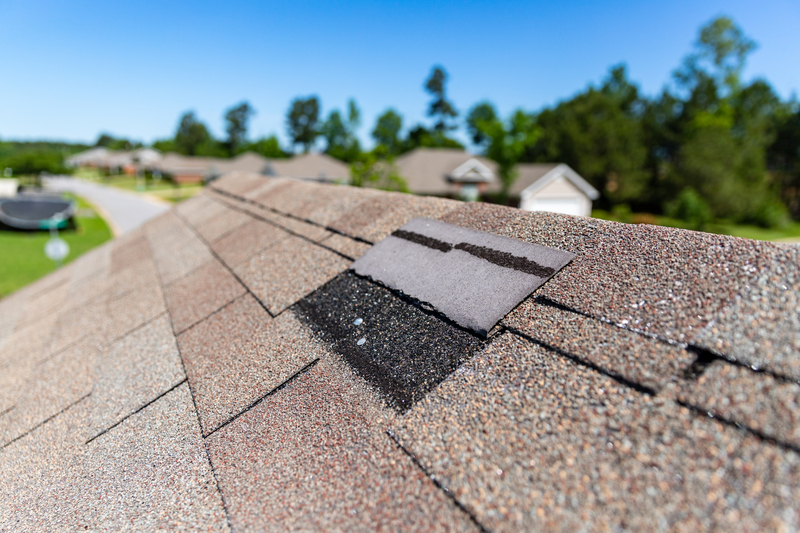Mother Nature’s tantrums, in the form of storms, can unleash their fury on our peaceful abodes, especially targeting our roofs and sidings. Acting as your home’s protective shield against the elements, maintaining their health is pivotal for your home’s overall stability. But, when a storm does take a toll, how do you rejuvenate and rebuild? This guide steers you through the restoration journey post-storm.

Immediate Steps Post-Storm
Safety First
Never attempt to inspect or fix storm damage during a storm. Wait until the weather has cleared and it’s safe to venture outside. Moreover, if there’s extensive damage to your home’s structure, it’s advisable to evacuate until a professional deems it safe.
Preliminary Inspection
Once it’s safe, perform a quick inspection to gauge the level of damage. Use binoculars if necessary, and observe from a distance to avoid the risk of falling debris or structural instability. Make a note of visible issues such as missing shingles, bent or loose siding, or shattered windows.
Take Photos
Documentation is crucial for insurance purposes. Capture detailed photos of all damaged areas. These pictures will serve as evidence of the state of your home immediately after the storm, which can be helpful during the claims process.
Emergency Repairs
Some damage can lead to immediate issues like water leakage. In such cases, take temporary measures to prevent further damage. This could involve placing a tarp over a damaged section of the roof or boarding up broken windows. However, don’t make extensive repairs until your insurance company has assessed the damage.
Contacting Your Insurance Company
File a Claim
Notify your insurance company as soon as possible to file a claim. The insurer will generally send an adjuster to assess the extent of the damage and estimate the costs for repair or replacement.
Review Policy
While waiting for the adjuster, review your insurance policy to understand what is covered. Storm damage is usually included, but there may be specific clauses or limitations you should be aware of.
Meet the Adjuster
When the adjuster arrives, accompany them during the inspection if possible. This will give you an opportunity to point out damage and understand how the adjuster is calculating costs.
Get Your Estimate
After the inspection, you’ll receive an estimate from the insurance company detailing the cost of repairs. Review it carefully and compare it with independent contractor estimates to ensure it’s fair and comprehensive.
Professional Assessment and Repair
Hiring a Contractor
Choose a contractor with a good reputation and experience in repairing storm-damaged homes. Make sure they are licensed, insured, and willing to provide references. If possible, choose contractors who have experience dealing with insurance claims.
Repair vs. Replacement
Depending on the extent of the damage, you may face the choice of repairing or replacing sections of your roof or siding. Sometimes, a repair is a more cost-effective short-term solution but could lead to recurring problems in the future. Discuss the options thoroughly with your contractor and insurance adjuster.
Project Timeline
Once you’ve settled on a contractor and agreed upon the scope of work, ask for a timeline. Storm damage can lead to a high demand for qualified contractors, so understand that there might be some waiting time involved.
Quality Checks
As the work progresses, stay engaged. Make sure the contractors are using high-quality materials that meet or exceed the specifications in building codes. Ensure that they are addressing not just the visible damage but also any potential underlying issues.
Final Inspection
After the repairs are complete, do a walk-through with the contractor to ensure all work meets your expectations. Hold off on making the final payment until you are satisfied with the work and have all the necessary documentation for your insurance.
Futureproofing Your Fortress
This storm can be a signboard for you to enhance your home’s defenses. Mull over integrating robust components like impact-resistant shingles or tougher siding materials. Russell Roofing offers a range of resilient options, ensuring your home stands tall against future tempests.
Weathering a storm’s aftermath can feel daunting, but armed with the right approach, restoring your sanctuary becomes seamless. Prioritize your safety, be diligent in documentation, lean on trusted professionals like Russell Roofing, and look towards the future. This storm will pass, and with proactive measures, you can ensure your home remains an emblem of safety, come rain or shine.

